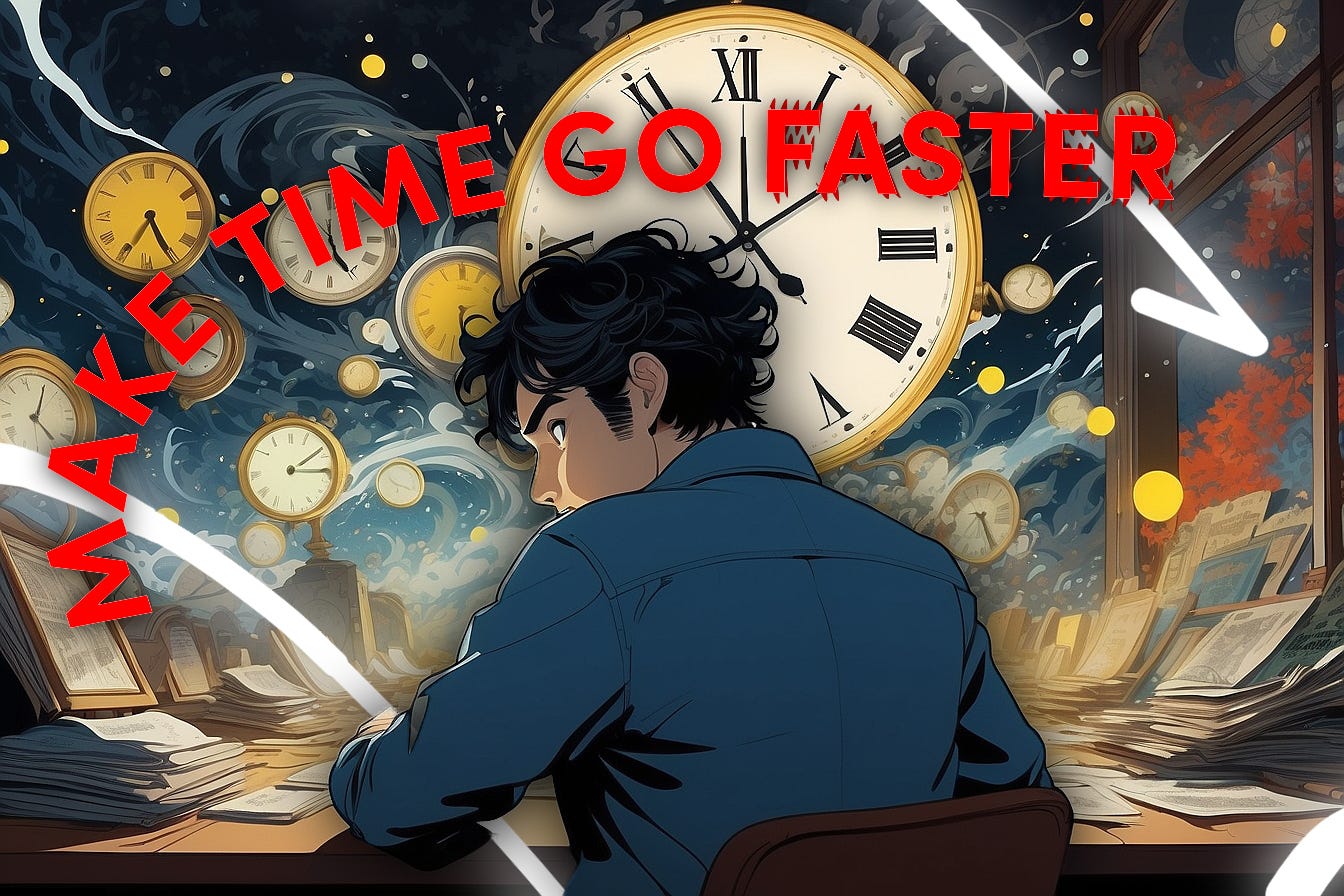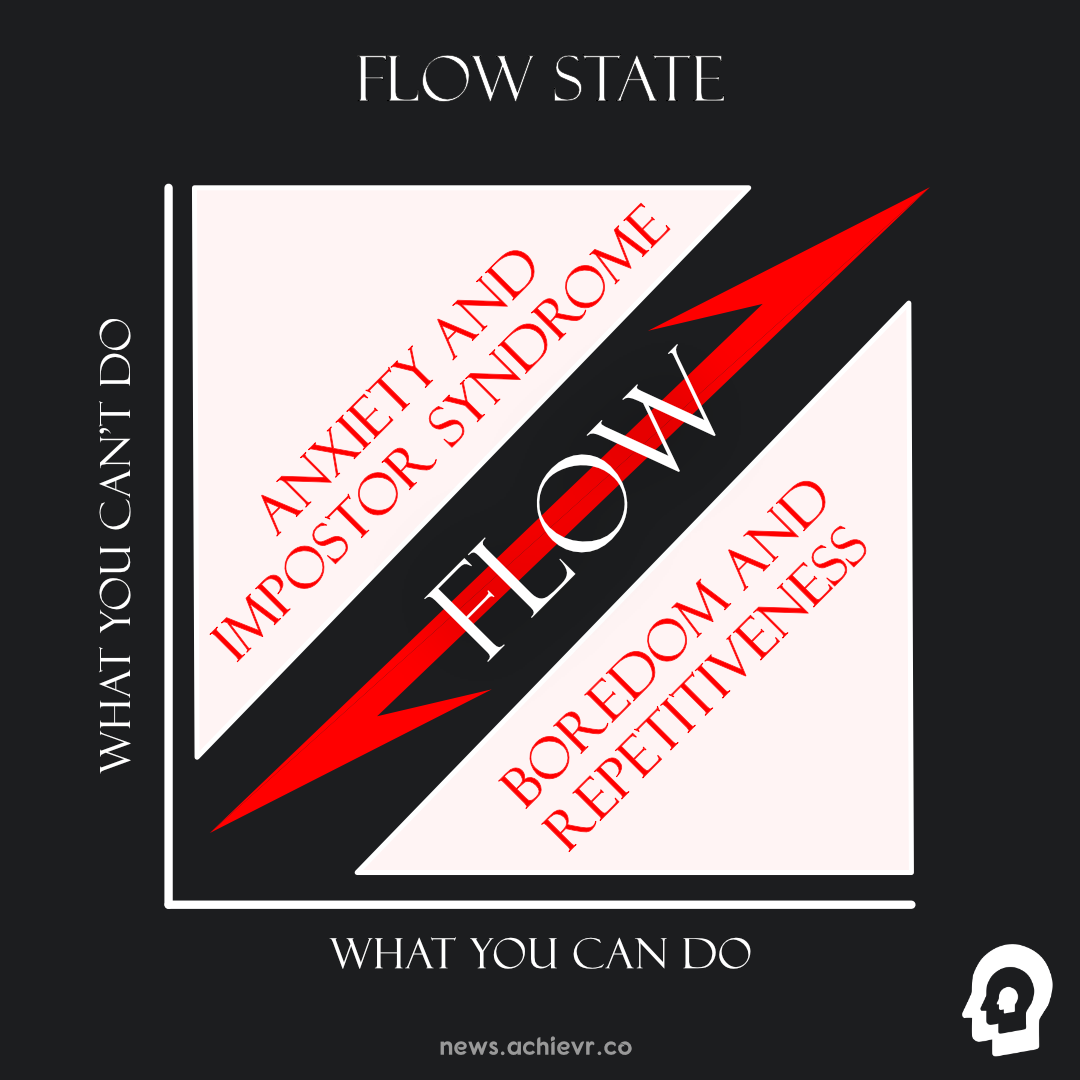Flow State and Time Quickening: The Productivity Edge You’re Overlooking
How to use time perception to do more meaningful work.
Have you ever been so deep in something that hours disappear?
You look at the clock and have no idea where the time went. That state of total immersion is repeatable. Once you understand how to use it, you can trigger it even in situations where it doesn’t come naturally.
2 quick ideas for today:
Flow state.
Time quickening.
Flow state
Occurs when the task is neither too easy nor too hard. Challenging enough to test your skills and put your existing abilities to use.
Flow is a peak mental state. Great art and performances are created in it. Even if they can’t name it, great athletes, directors, musicians, and writers feel it while doing what they do best.
It’s easy to get into it in video games, sports, and other quick-reward activities. You don’t force yourself to do them. If anything, you can’t get enough of them.
Gaming, running, conversation. It occurs in many. It isn’t that rare.
The keyword here is: immersion.
The challenge is learning to use it for what you want, when you want.
Time quickening
At work, time slows. Binging your favorite series, time speeds up. Not literally, but your perception of it.
Wouldn’t it be nice to turn those tables?
Perception of time is relative. One hour is always one hour, but one hour can feel like 10 minutes or 2 hours. This is a real phenomenon that you can use to your advantage.
6 steps for time quickening:
Distraction-free work environment.
Focus on one task at a time until it's completed.
Work hard and work well.
Work uninterrupted for the scheduled time.
Don't look at the clock.
Stop working when thinking becomes unclear due to fatigue.
6 steps in depth:
Don’t switch attention. One thing at a time until it’s done. Important work can be hard and unclear. When you feel tired of the task, it’s better to just sit doing nothing and let your mind process, than get to doing something else, occupying it further. Unless it’s something trivial you have to do.
Don’t stop until what’s planned for the session, or more, is completed. When you flow, you go. Specific task—so you know what. Time block—so you know when. Execution—no distractions, no giving up. That’s how you make progress. Very simple but very difficult.
Try 45 45-minute work/15-minute rest split. No matter what, don’t stop until time’s up. In creative work, it takes some time to warm up. If you go through this phase, it gets easier to go. Good performance is repeatable, just not every session, and not immediately after starting.
Don’t compare how much you’ve accomplished with how much is left to do. This kills motivation and brings overwhelm. One brush stroke is insignificant, 1000 create a painting. You eat an elephant one bite at a time. After all this journey, I can confidently say that breaking complex stuff into small, clear chunks and diving into them immersively is one of the 2 most important productivity tricks.
As with working out, there’s a limit to your brain too. If you feel tired but not sleepy, that’s the limit. Quality (rested mind) over quantity (tired). When tired, don’t keep going. Rest. That is, counterintuitively for some, a faster way to progress.
Do more in what feels like less time.
Steps from this book, with my personal notes.
FUEL YOUR CREATIVE SUCCESS
Become a hyper-achiever! Your subscription directly fuels new content!
If you enjoy AchievR, you can support my work by buying me a coffee.
Any suggestions? Give me feedback here:
Upcoming Next week: Premium Mind Bullet You have so many ideas, how to pick the best ones?
To read next:





